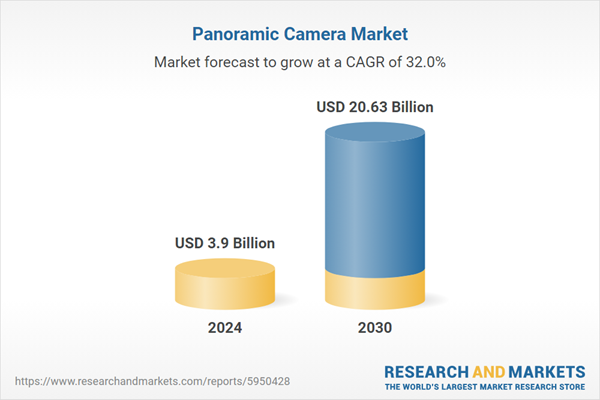Surveillance and Security is the fastest growing segment, Asia-Pacific is the largest market globally
Speak directly to the analyst to clarify any post sales queries you may have.
10% Free customizationThis report comes with 10% free customization, enabling you to add data that meets your specific business needs.
Key Market Drivers
The increasing demand for immersive visual experiences emerges as a primary market driver, fueled by the rapid expansion of virtual and augmented reality ecosystems. Panoramic cameras are crucial for crafting engaging, three-dimensional content for virtual tours, interactive gaming, and educational simulations, requiring expansive fields of view for true immersion. This demand drives innovation in camera technology, including higher resolution, improved stitching, and seamless VR/AR integration.Key Market Challenges
The high initial investment costs associated with advanced panoramic camera systems present a substantial impediment to the growth of the Global Panoramic Camera Market. These elevated costs restrict broader market penetration, particularly within segments sensitive to capital expenditure such as smaller enterprises and for non-specialized consumer applications. Smaller businesses often operate with constrained budgets, making the acquisition of expensive panoramic systems a significant financial commitment that many cannot justify for non-critical uses, thus limiting their adoption.Key Market Trends
The integration of AI-Powered Image Enhancement and Automation is transforming panoramic camera functionality. This trend leverages artificial intelligence to refine image quality through advanced stitching, improved low-light performance, and dynamic range optimization, while also automating complex tasks such as object detection and tracking within wide-field-of-view captures. These advancements reduce post-production efforts and expand the practical applications of panoramic cameras across various sectors. For instance, according to Canon, in a July 2024 announcement, their new EOS R1 and EOS R5 Mark II cameras feature Accelerated Capture technology that processes data with deep learning for enhanced image quality, speed, and autofocus precision.Key Market Players Profiled:
- Samsung Electronics Co., Ltd
- Ricoh Company Ltd
- Nikon Corporation
- GoPro, Inc
- Axis Communication AB
- Vivotek Inc.
- Sony Corporation
- Xiaomi Corporation
- Panono GmbH
- Teledyne FLIR LLC
Report Scope:
In this report, the Global Panoramic Camera Market has been segmented into the following categories:By Camera Type:
- Single-Lens Panoramic Cameras
- Multi-Lens Panoramic Cameras
- 360-Degree Panoramic Cameras
By Technology:
- Spherical Panoramic Cameras
- Cylindrical Panoramic Cameras
By Application:
- Virtual Reality (VR) Content Creation
- Surveillance and Security
- Automotive (for 360-degree view)
- Entertainment and Gaming
- Tourism and Travel
- Architectural and Real Estate Photography
By Region:
- North America
- Europe
- Asia Pacific
- South America
- Middle East & Africa
Competitive Landscape
Company Profiles: Detailed analysis of the major companies present in the Global Panoramic Camera Market.Available Customizations:
With the given market data, the publisher offers customizations according to a company's specific needs. The following customization options are available for the report:- Detailed analysis and profiling of additional market players (up to five).
This product will be delivered within 1-3 business days.
Table of Contents
Companies Mentioned
- Samsung Electronics Co., Ltd
- Ricoh Company Ltd
- Nikon Corporation
- GoPro, Inc
- Axis Communication AB
- Vivotek Inc.
- Sony Corporation
- Xiaomi Corporation
- Panono GmbH
- Teledyne FLIR LLC
Table Information
| Report Attribute | Details |
|---|---|
| No. of Pages | 185 |
| Published | November 2025 |
| Forecast Period | 2024 - 2030 |
| Estimated Market Value ( USD | $ 3.9 Billion |
| Forecasted Market Value ( USD | $ 20.63 Billion |
| Compound Annual Growth Rate | 32.0% |
| Regions Covered | Global |
| No. of Companies Mentioned | 10 |









